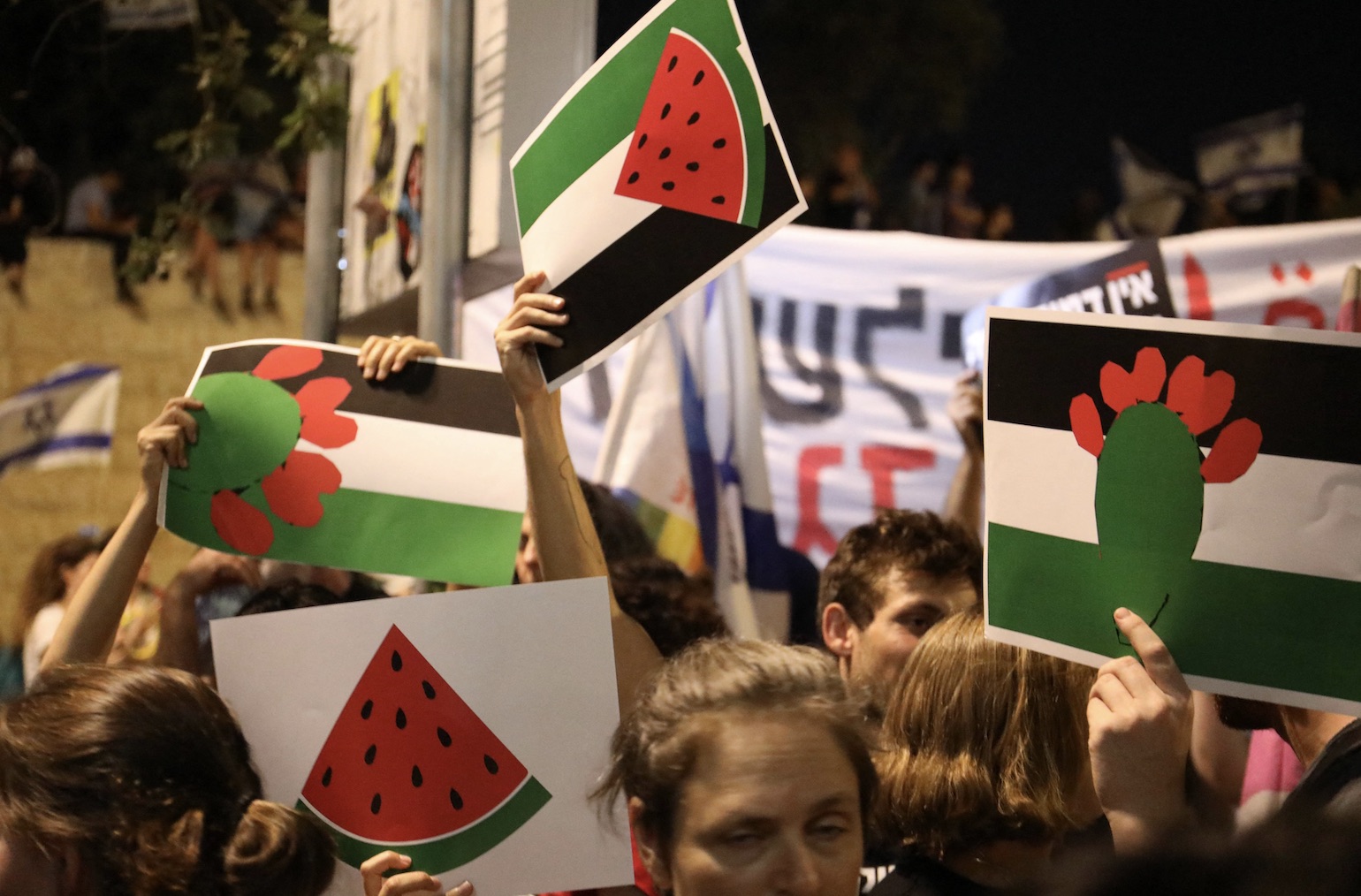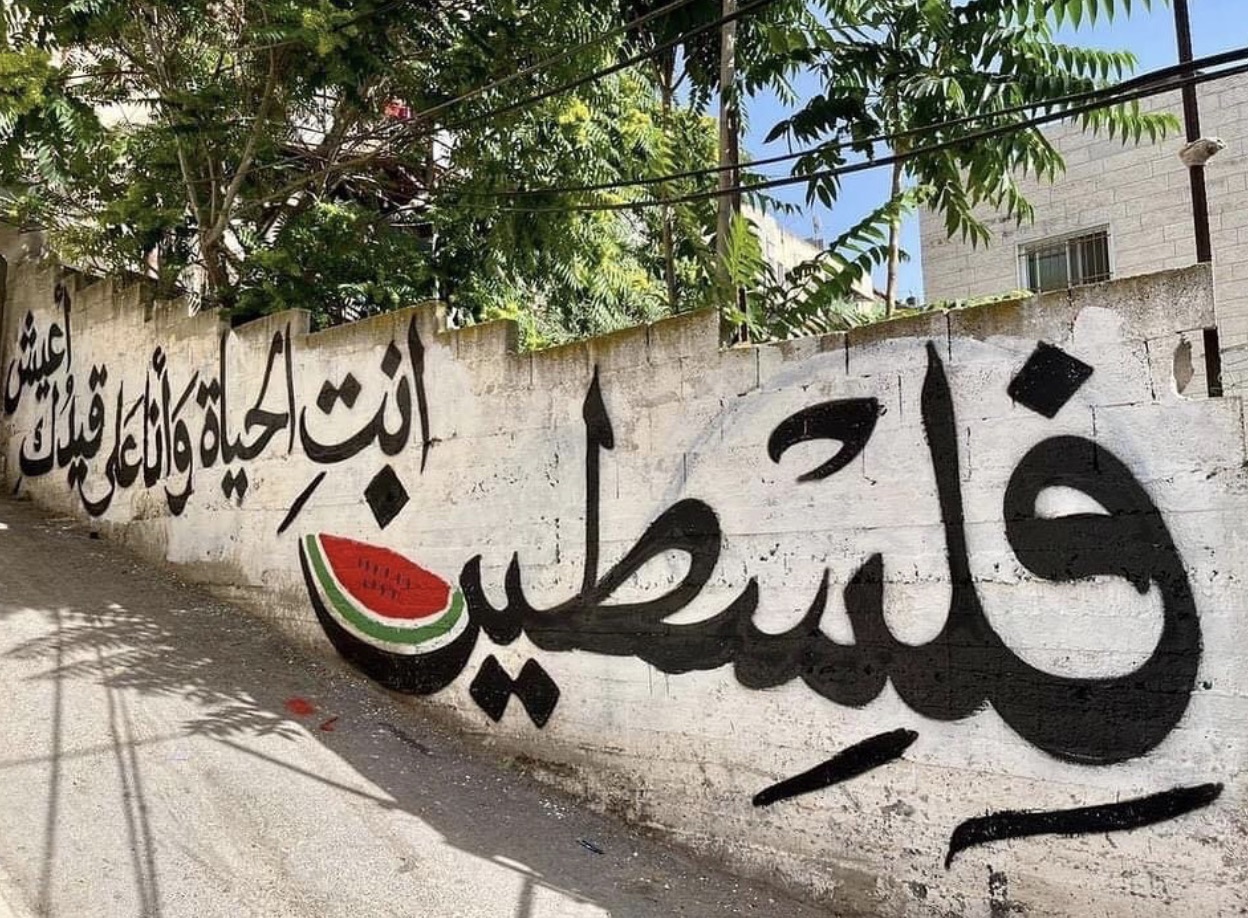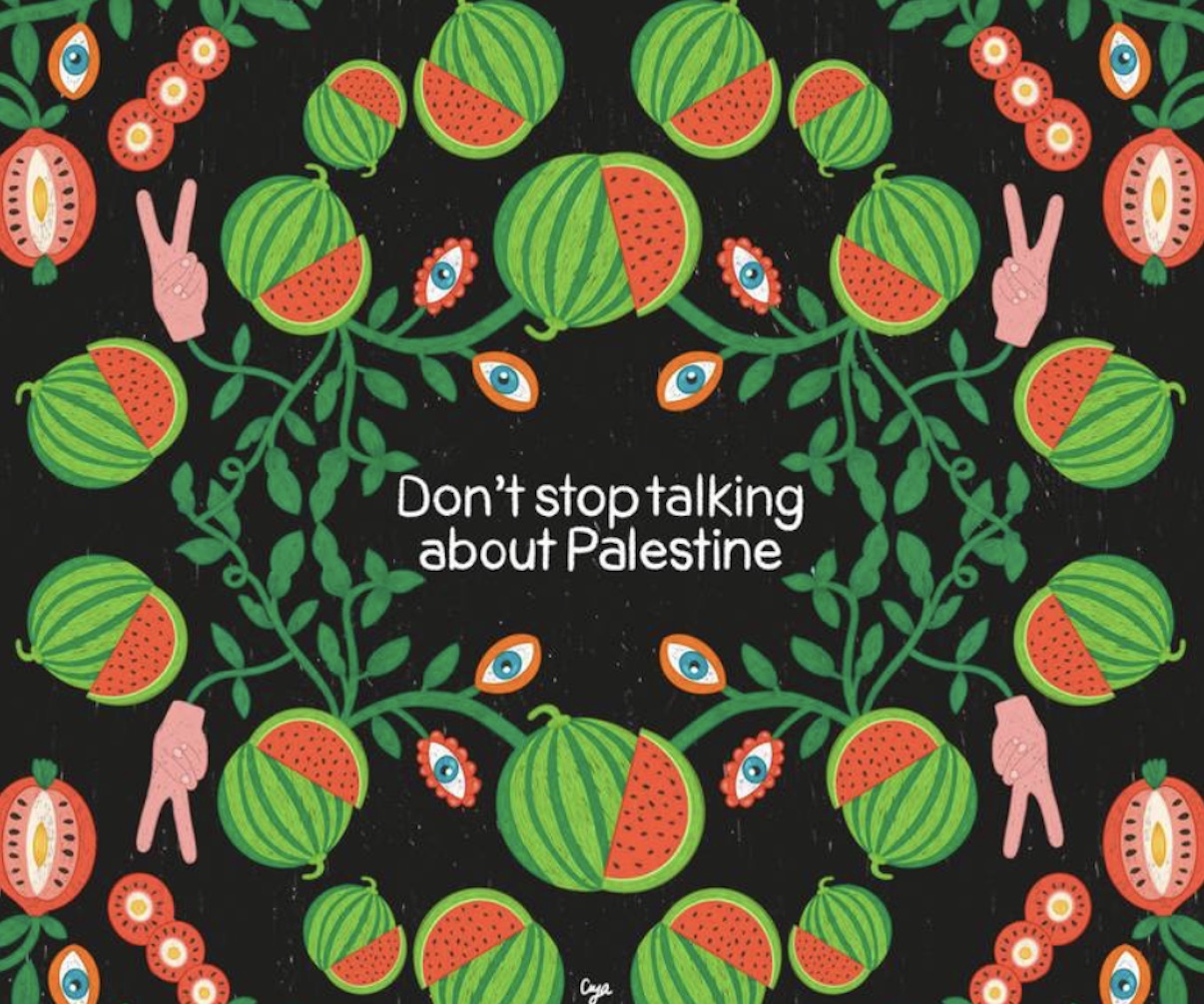Red, black, white, and green are the colors of a watermelon — but they are also the colors of the Palestinian flag. Whether seen as emojis on social media, painted as art, or held in hand during protests, the watermelon has long been an emblem of Palestinian resistance.
After the 1967 Arab-Israeli War, the Palestinian flag and its colors drew the ire of authorities in Israel, thus resulting in the prohibition of its display in Gaza and the West Bank. As a form of protest, Palestinians used the slices of watermelon — locally sourced and similarly colored — as a symbolic substitute.
In 2007, Palestinian artist Khaled Hourani introduced his artwork ‘Watermelon’ as a contribution to the book Subjective Atlas of Palestine. This act served as a catalyst, inspiring numerous other artists — such as Sarah Hatahet, Sami Boukhari, Aya Mobaydeen, and Beesan Arafat — to craft their own artistic expressions utilizing the symbolic watermelon as a means of expressing solidarity with Palestine.
“Art can sometimes be more political than politics itself,” Hourani told the Washington Post.
57 years later, in 2023, the watermelon has seen a resurgence on social media, following the events of the Gaza-Israeli conflict which started on 7 October, after Hamas launched a surprise attack on a number of southern Israeli towns.
Eighteen days later, more than 5,000 Palestinians have been killed in the Gaza Strip as a result of Israel’s indiscriminate bombing campaign — over 1,000 of them children — and 15,273 others injured. Meanwhile 91 Palestinians have been killed in the West Bank, far from any Hamas activity, and 1,250 have been injured.
As the world watches one of the most violent episodes of the conflict unfold, social media users have been trying to circumvent the perceived online censorship and content filtering in Palestinian or pro-Palestinian content. Various users have noticed an evident decline in reach on their stories and posts — most notably on anything relating to Gaza and the atrocities happening on the ground there.
“Palestinians are finding creative ways — such as omitting punctuation, changing letters in words, or mixing political statements with personal photos — to overcome and play with the algorithm to prevent posts from being taken down, censored, or flagged,” said Mona Shtaya, local advocacy manager at 7amleh, the Arab Center for the Advancement of Social Media, to the Washington Post.
Symbolism has always been a significant tool in the arsenal of Palestinian resistance; for decades, Palestinians have used symbols such as the keffiyeh and pictorials such as Handala to protest, to mourn, and to resist.
Something as simple — quite mundane — as the slice of a watermelon has managed to transcend censorship and efforts of silencing. It remains a beacon of Palestinian defiance — reflecting the outpouring of solidarity and activism that knows no boundaries.









Comments (2)
[…] How Did a Watermelon Slice Become the Symbol of Palestinian Solidarity? […]
[…] How Did a Watermelon Slice Become the Symbol of Palestinian Solidarity? […]